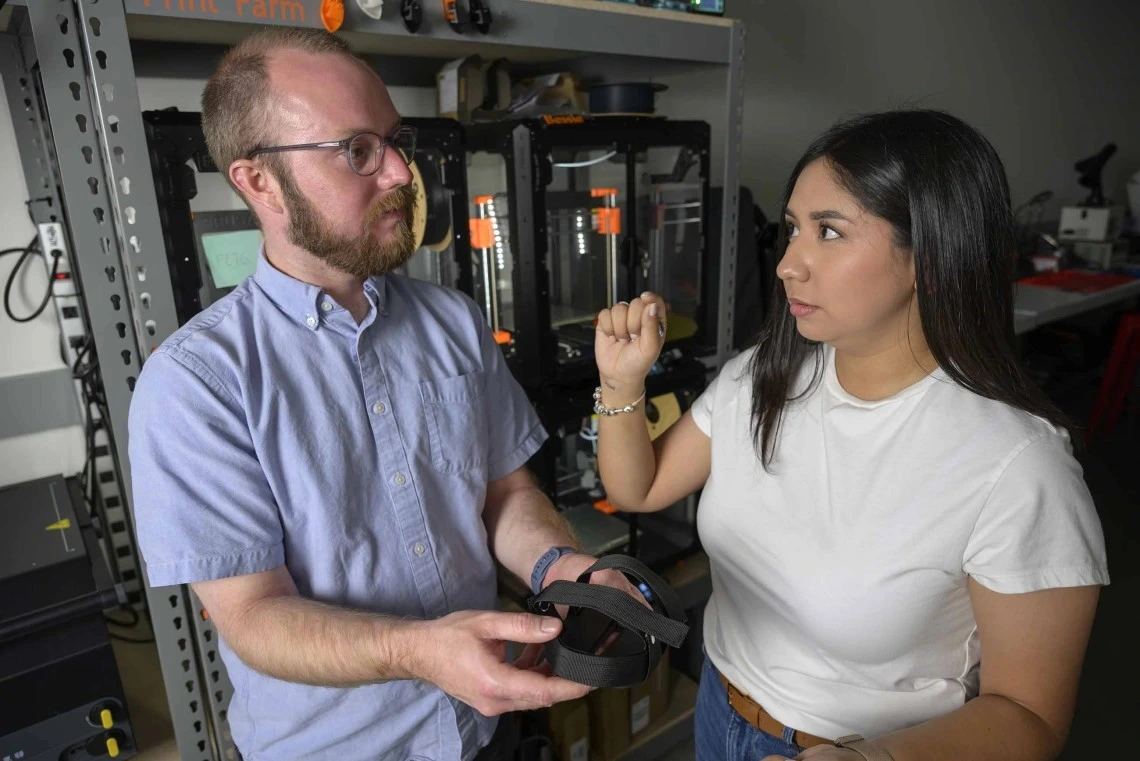Matthew Briggs builds confidence, sparks student creativity

As an assistant professor of practice and design fellow for the College of Engineering, Matthew Briggs instructs students – like biomedical engineering’s Ruth Salazar – and guides programs at the Engineering Design Center, or EDC.
Kris Hanning, U of A Health Sciences Office of Communications
When Ruth Salazar enrolled in a course about design thinking, she saw an opportunity to make a difference. The biomedical engineering student and former physical therapist wanted to help people with motor impairments by designing a switch-adapted ceiling fan control.
The course instructor, Matthew Briggs, an assistant professor of practice in the University of Arizona College of Engineering and Health Sciences Design program, encouraged her to first solicit feedback directly from a local organization to better shape her project. Following his advice, Salazar connected with Children’s Clinics for Rehabilitative Services, where she previously worked. They proposed a different challenge: create affordable bicycle pedal adapters to help children with complex medical diagnoses keep their feet secure while riding adaptive bicycles.
With Briggs’ encouragement and guidance, Salazar scrapped her initial idea and began developing 3D-printed pedal adapters, refining the design through multiple iterations to meet the clinic’s needs.
Salazar’s story reflects the transformative learning environment fostered by Briggs. His expertise in design and passion for hands-on education empower students to tackle real-world challenges with creative design.
“My teaching philosophy has evolved to focus on building students’ confidence with technology through hands-on experience” Briggs said. “I want them to feel ready to run with an idea. My goal is to spark creativity, teach practical skills and build their confidence – not just with the tools, but in themselves, their communities and their careers.”
As a design fellow, Briggs shares his time between the Engineering Design Center and the Health Sciences Design Space. The 5,000-square-foot EDC makerspace offers spaces equipped with 3D printers, 3D scanners, sewing machines, a plotter cutter, woodworking and metalworking equipment, and electronics equipment. Engineering students can access the center anytime, and a supportive technician is available Monday to Saturday.
Shaping successful designers
Salazar’s adaptive pedal project exemplifies the real-world impact of Briggs’ mentorship. After consulting with physical and occupational therapists, Salazar designed large and small 3D-printed pedal adapters to accommodate different age groups.
“I was overdoing it at the beginning,” Salazar said. “Professor Briggs said, ‘You can make this simpler.’ I took his feedback, added elements from other adaptive equipment, and it became a beautiful project.”
Health professionals at the Children’s Clinics for Rehabilitative Services tested the adapters.
“I got a text from one of the therapists, saying that the toddler adapter worked wonderfully for a kid who had never been able to use the bike because the pedals didn’t fit him. It was very special, knowing I created something that helped someone enjoy a part of their life they hadn’t before.”

